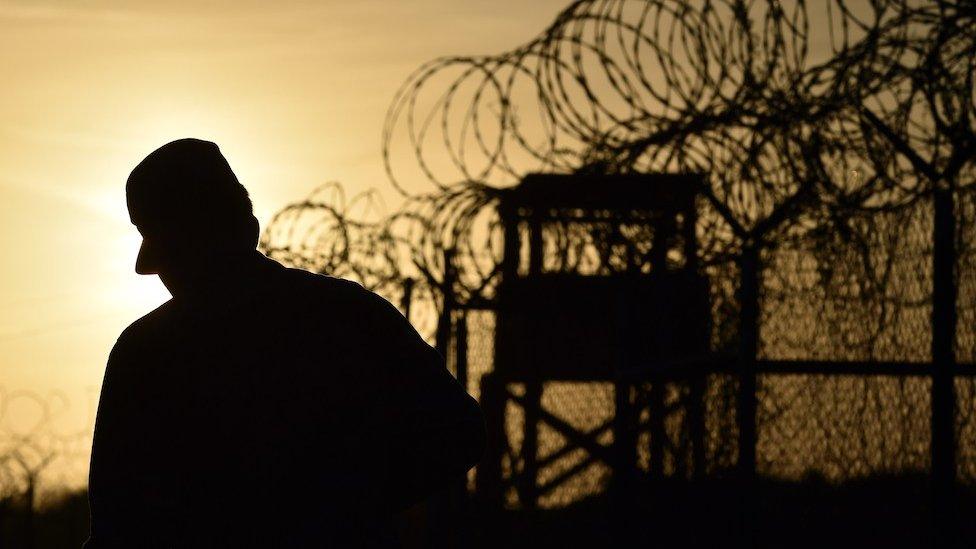9/11: What happened and how many people died in September 11 attacks?
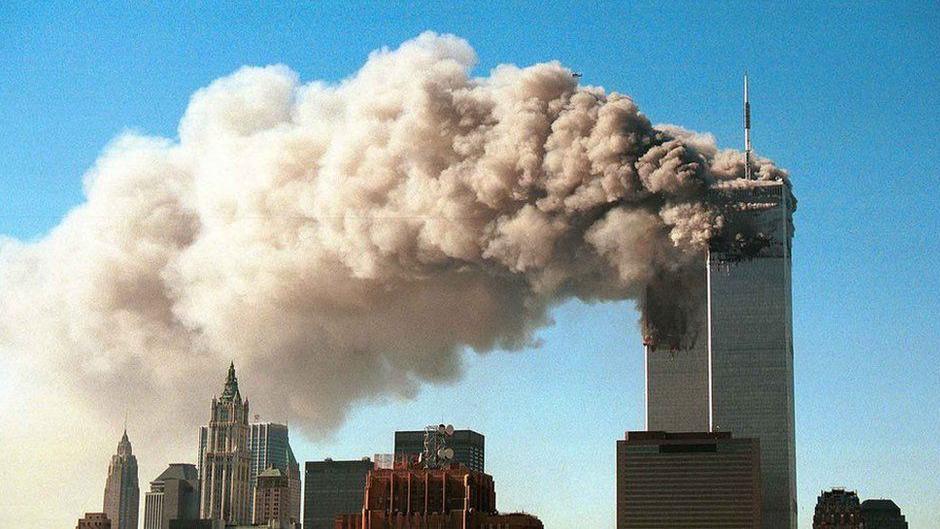
- Published
A series of events will take place on Thursday in the United States to mark the 24th anniversary of the 9/11 attacks.
On Tuesday 11 September 2001, suicide attackers seized US passenger jets and crashed them into two New York skyscrapers, killing thousands of people.
The event had profound consequences across the globe.
Which buildings were targeted?
Four planes flying over the eastern US were seized simultaneously by small teams of hijackers.
They were then used as giant, guided missiles to crash into landmark buildings in New York and Washington.
Two planes hit the Twin Towers of the World Trade Center in New York, with the second strike 17 minutes after the first.
The buildings were set on fire, trapping people on the upper floors, and enveloping the city in smoke. In less than two hours, both 110-storey towers collapsed in massive clouds of dust.
A third plane destroyed the western face of the Pentagon - the giant headquarters of the US military just outside the nation's capital, Washington DC.
The fourth plane crashed in a field in Pennsylvania after passengers fought back. It is thought the hijackers had meant to attack Washington's Capitol Building.
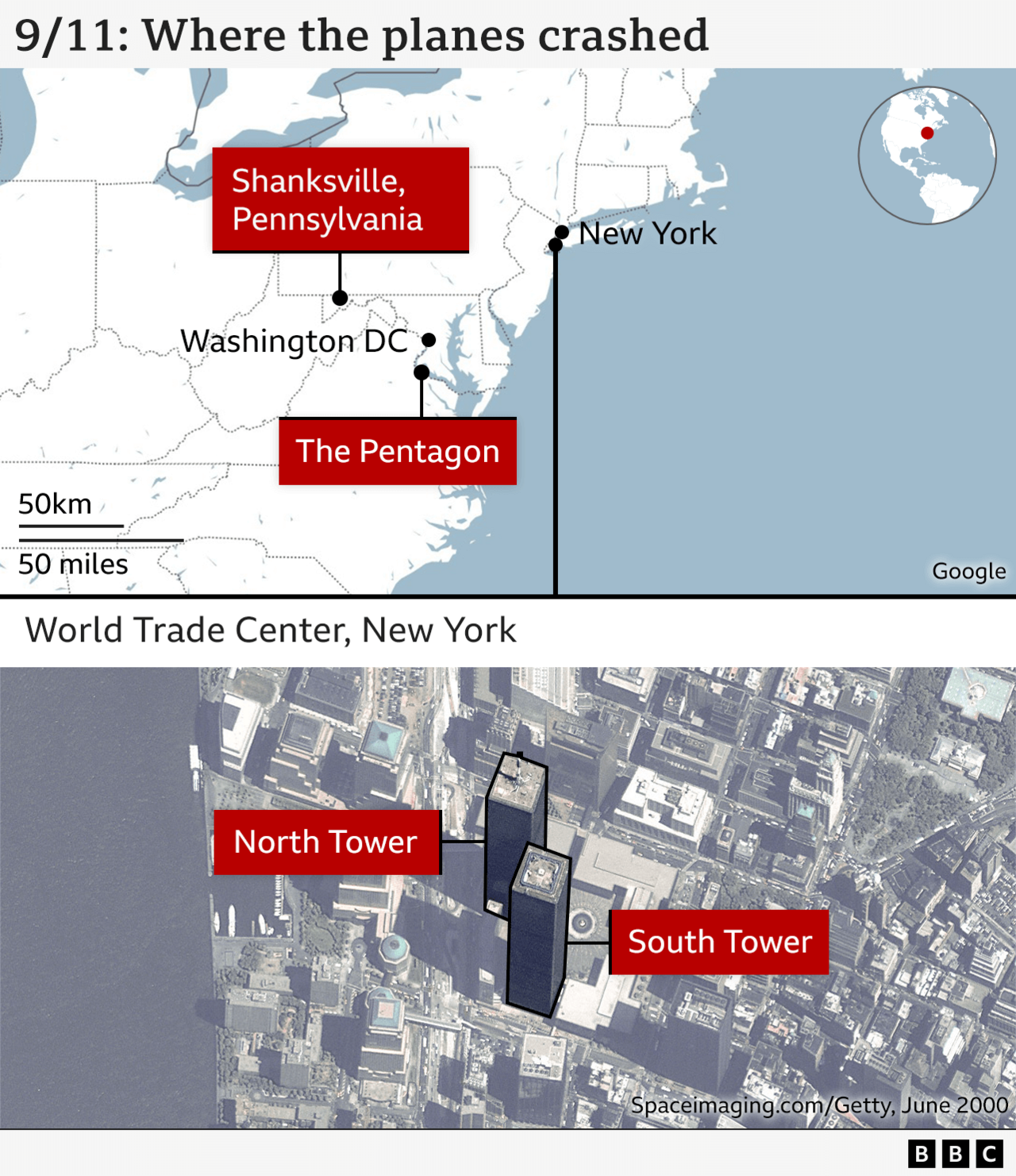
How many people died in the 9/11 attacks?
In total, 2,977 people (not counting the 19 hijackers) lost their lives, most of them in New York:
All 246 passengers and crew aboard the four planes were killed
At the Twin Towers, 2,606 people died - at the time or later from injuries sustained during the attack
At the Pentagon, 125 people were killed.
The youngest victim was two-year-old Christine Lee Hanson and the oldest was 82-year-old Robert Norton, who were both passengers on planes.
When the first plane struck, an estimated 17,400 people were in the two towers. Nobody survived above the impact zone in the North Tower, but 18 managed to escape from the floors above the impact zone in the South Tower.
Citizens of 77 different countries were among the casualties. New York City lost 441 first responders.
Thousands of people were injured, or later developed illnesses connected to the attacks, including firefighters who had worked in toxic debris.
Emotional tributes paid to 9/11 lives lost
- Published12 September 2021
In pictures: Silence and tears as US remembers 9/11 attacks
- Published12 September 2021
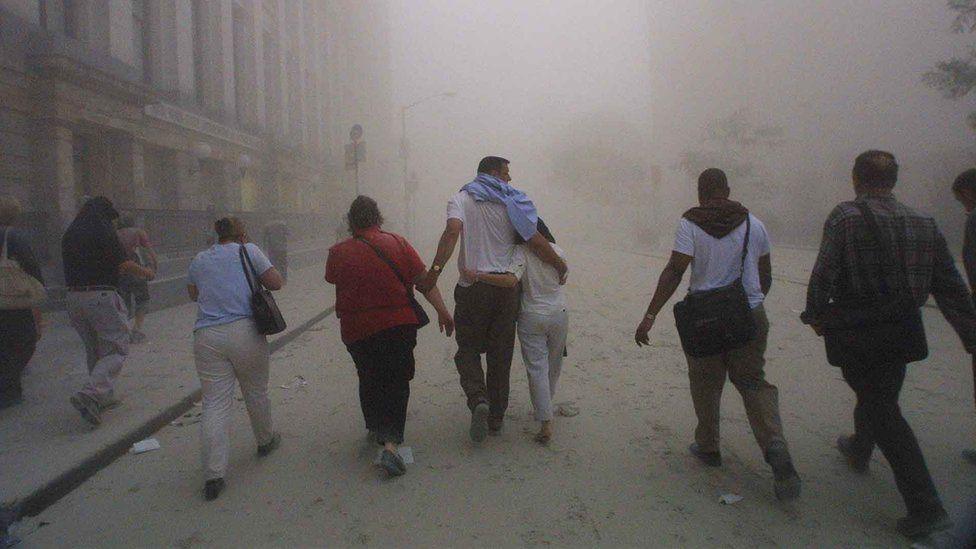
Who were the 9/11 attackers?
An Islamist extremist network called al-Qaeda planned the attacks from Afghanistan.
Led by Osama Bin Laden, al-Qaeda blamed the US and its allies for conflicts in the Muslim world.
The group's Khalid Sheikh Mohammad is believed to have devised the plot, and helped to recruit the pilots, some of whom trained in the US.
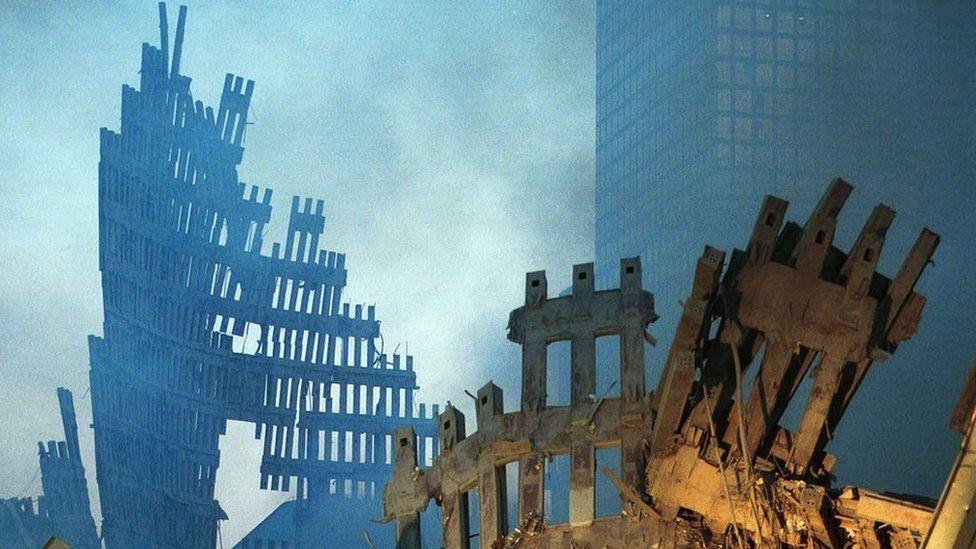
Nineteen people carried out the hijackings, working in three teams of five and one of four (on the plane which crashed in Pennsylvania).
Fifteen of the hijackers were Saudis like Bin Laden. Two were from the United Arab Emirates, one was from Egypt and one was from Lebanon.
How did the US respond to 9/11?
Less than a month after the attacks, the then US President George W Bush led an invasion of Afghanistan - supported by an international coalition - to eradicate al-Qaeda and hunt down Bin Laden.
However, it was not until 2011 that US troops finally located and killed Bin Laden in neighbouring Pakistan.
Khalid Sheikh Mohammad had been arrested eight years earlier in Pakistan in 2003.

Al-Qaeda still exists. It is strongest in Sub-Saharan Africa but even now has members inside Afghanistan.
US troops left Afghanistan in 2022 after nearly 20 years, stoking fears from many that the Islamist network could make a comeback.
Who is Khalid Sheikh Mohammed and what happened to him?
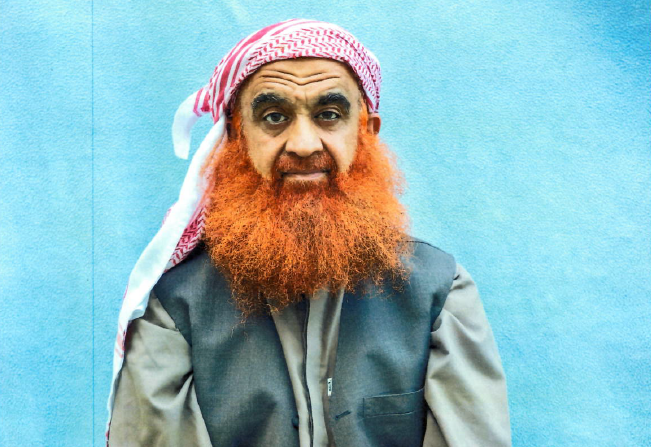
Born in Kuwait, Khalid Sheikh Mohammed studied engineering in the US before fighting in Afghanistan in the 1980s.
He was already wanted by the FBI before 9/11 because of his involvement in other bombings and thwarted attacks.
After his 2003 arrest, Mohammed spent three years at secret CIA prisons where he faced brutal interrogation techniques, before being sent to the US Navy base at Guantanamo Bay in Cuba, where he has remained.
A military court on the base has been considering whether and how he can be tried for his role in 9/11 for more than a decade, given concerns that his treatment while in US custody could undermine the evidence against him.
In January 2025, he and two other defendants - Walid Muhammad Salih Mubarak Bin Attash and Mustafa Ahmed Adam al-Hawsawi - had been expected to plead guilty for their part in the attacks. In return, they would avoid the death penalty, instead serving life sentences without parole.
But the day before the hearing, the US federal appeals court halted proceedings to consider a request from the US government to abandon the plea deal, which it claimed would cause "irreparable" harm.
In July, the court formally rejected the plea agreement.
It is not clear what will happen next in the case.
In court with the '9/11 mastermind', two decades after his arrest
- Published10 January
What was the legacy of 9/11?
Flight safety was tightened around the world in the years following the 9/11 attacks.
In the US, the Transportation Security Administration (TSA) was created to beef up security at airports and on planes.
It took more than eight months to clean up "Ground Zero" - the site of the fallen Twin Towers.
A memorial and a museum now stands on the site, and buildings have risen up again, to a different design.
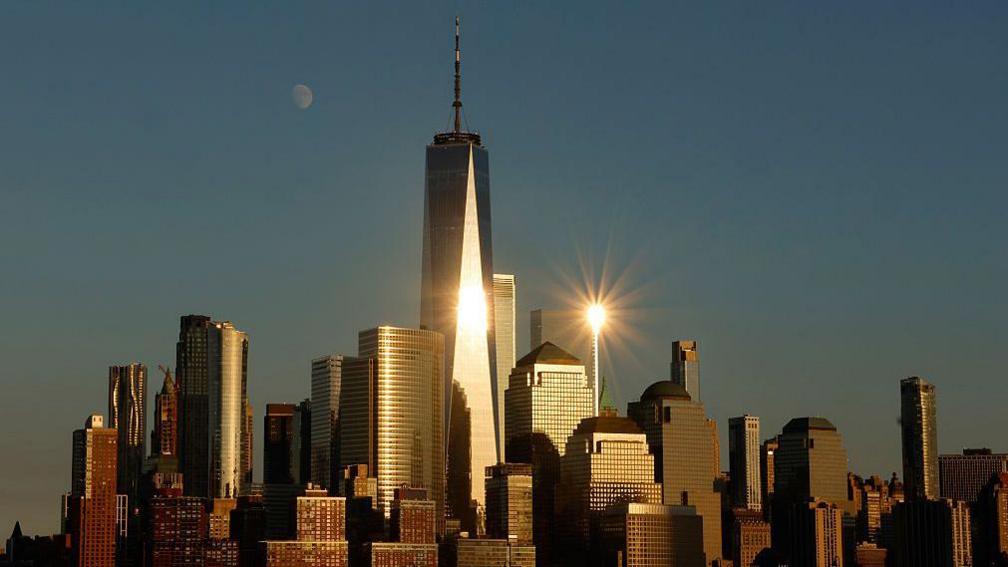
At 1,776ft (541m), the completed centrepiece - the One World Trade Center, or "Freedom Tower" - stands even higher than the original North Tower which it replaced, which was 1,368ft (417m).
Reconstruction at the Pentagon took just under a year, with staff back in their offices by August 2002.
- Published11 September 2021
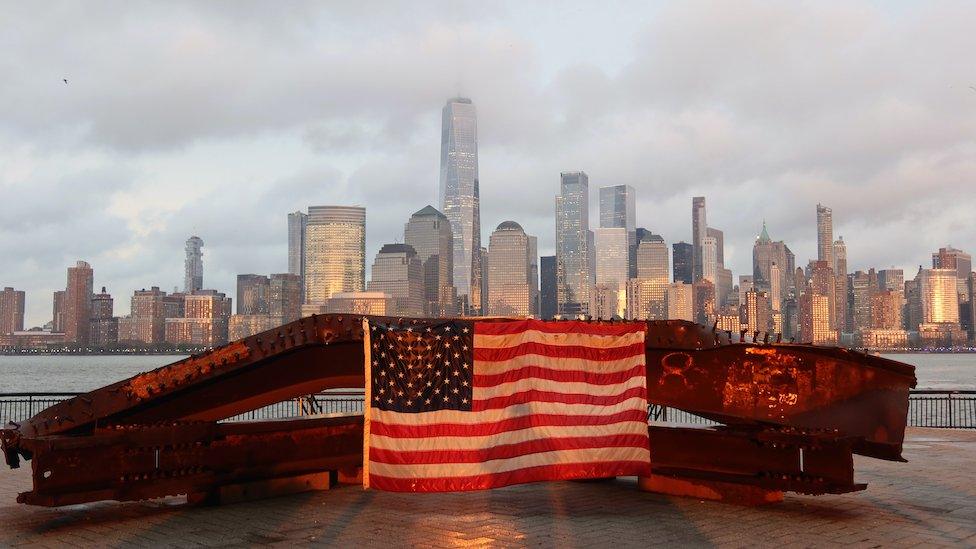
- Published9 September 2021
